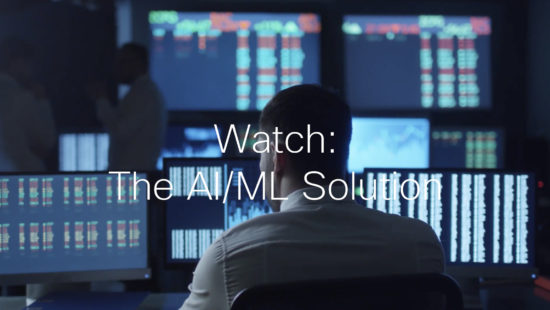Guest Author: Anthony McKinney, Data Center Specialist, Army Tactical/SOF at Cisco. During his time in the U.S. Navy, Anthony served operational tours as a Surface Warfare Officer and SEAL Officer leading units on deployments to South America, the Mediterranean, and the Middle East. He has totaled 30 years combined Active and Reserve Service, and retired in 2016 as a Navy Captain.
Collaborator: Michelle Tschudy
Recently the U.S. Department of Defense (DoD) released the DoD AI Strategy which lays out approach and focus areas for adopting Artificial Intelligence (AI) “to advance our security and prosperity”. One will quickly grasp by reading the 17 page summary that no silver bullet solution awaits.
AI strategies for the DoD
The Strategy sets an approach in place for the myriad challenges that improve the DoD’s ability to “operationalize” AI. This Strategy identifies the cross-organizational, even cross-cultural interactions needed to enhance AI for DoD. Several analogies come to mind, such as the telephone, the television, or the automobile, that were practical when they were first introduced, but think of how each one has matured as the technology has advanced within these systems.
So too, will the technology supporting AI. And similar to the DoD AI Strategy, the companies that establish an open technology framework will enable the end customer to establish a technology foundation that persists longer through software updates and reduces the need for a rip and replace approach.
What is AI/ML?
Actually a better question would be “what are they,” meaning what is artificial intelligence and what is machine learning (and what else is implied that isn’t part of the term). AI/ML is not just a single technology play, but in reality:
- Depends on specific aspects of AI like deep learning, machine learning, inferencing, and training
- The specific mission area requires apportionment of the appropriate technology to best meet the business and/or mission requirements
- In relation to defense, the DoD should build appropriate programs that reward industry sharing such technologies.

In his blog on Deep Reinforcement Learning: Pong from Pixels, Andrej Karpathy speaks of four factors that can hold back AI:
1. Compute (Servers)
2. Data (conditioned/normalized)
3. Algorithms
4. Infrastructure (underlying OS, Protocols, Software, Networking).
From a half glass full view, these four factors, when working together as a unified system, would further enhance AI. You probably know that there are best of breed companies that build products with unique differences, based on specific customer needs. However just as in science, experimentation often leads to solutions where the technology is much better suited.
Advances in the fields of AI and ML are one of the reasons we recently launched the Cisco GPU accelerated data center to enable workloads like desktop & app virtualization, virtual workstations, and accelerated analytics (learn more at Cisco AI/ML).
Partnership on AI
Companies that work well with partners and establish models for the mutual benefit of themselves and the customers will excel in the complex challenges that AI introduces. A good example of this type of collaboration is The Partnership on AI. It is one of the newer organizations specifically focused on improving AI for the global good. With its 70+ partners sharing data and working on common challenges, it is much more likely that experimentation will lead to additional AI value for customer needs.
Securing data and access
One of the most critical issues for employment of AI across enterprises is the ability to protect data and limit access to those with a “need to know”. This could be companies who use their intellectual property to maintain a market lead over competitors, or nation states whose sovereignty and influence on a broader stage may be impacted.
Intuitive Data Centers
Cisco has been advancing data center technology with software for enhancing management and functionality to support our customers’ needs and improve their business outcomes. And in reference to Karpathy’s model from the blog above, Cisco Compute and Infrastructure are built to leverage the intelligence that is produced from data and algorithms, all while working with other hardware and software vendors to optimally tune end-to-end solutions.
Cisco’s AI/ML solution, which will be showcased at the AFCEA AI & ML Tech Summit at the end of March , is a new addition to the family of solutions which Cisco and partners work on to support the needs of customers like you. The Cisco GPU Accelerated Data Center is one of the solutions that will enable customers to expand their missions, through AI/ML that includes the ideal software and solution partners, but also ensures a secure, simplified, and easily managed experience.
Obvious from the beginning, there is no silver bullet for AI, but through advances in products like Cisco’s Deep Learning server, and with the vast array of partners supporting customers’ needs from HQ out to the tactical edge, you are equipping yourself with a secure and investment protected solution to address the evolution of AI.
You’re Invited! Join Cisco at the AFCEA AI & ML Tech Summit
If you are interested in joining the conversation on AI/ML, then we invite you to join us at the AFCEA AI & ML Tech Summit March 27, 2019 in Washington, DC where we’ll take a deeper dive into Cisco GPU accelerated data center and its benefits. Be sure to drop by and talk with our architects at one of our demo stations, or even request a private meeting to discuss your specific business needs.
Resources
White Paper: An Architectural Approach to AI/ML for DoD
How machine learning is key to improving daily business services.


Why AI is so important in daily life now?